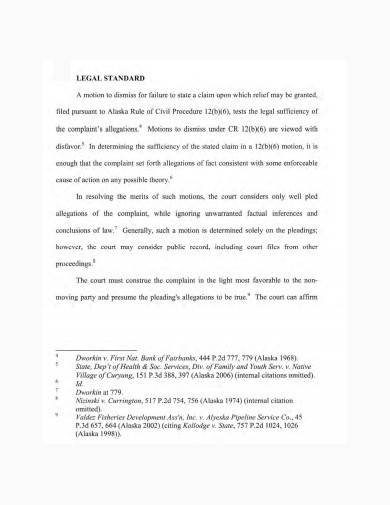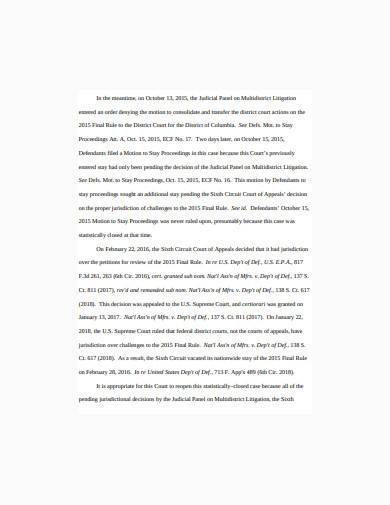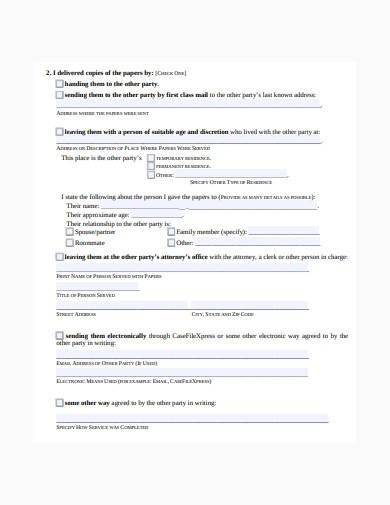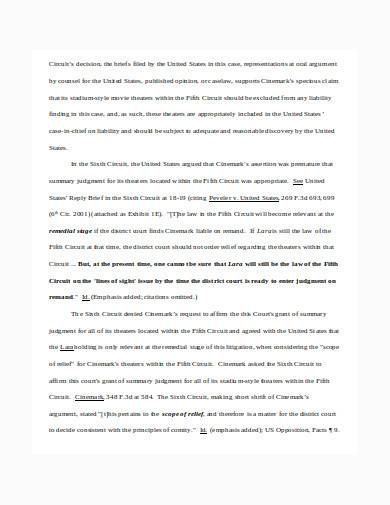It’s not every day that one gets involved in a lawsuit, so it’s rarely a threat. But if you ever get yourself caught in a lawsuit, then you should consider the course of actions to take. Several options are available to you—that is, if you act accordingly. For example, if you want the court to drop the case or let the judge decide the case without undergoing full trial. These instances can happen if you file a case motion in court during the litigation process.
What Is a Case Motion in Court?
There are a variety of case motions that a plaintiff and defendant can file in court if they get involved in a lawsuit. Filing case motions based on the type of case is a standard practice in court to obtain a ruling or direction for a specific case. A case motion is a written proposal or a request that is filed in court and is subject to the approval or rejection of the court. Different case motions have their specific requirements for filing. To know more about these requirements, to consult your attorney or check with your local court rules for the things that you need.
Filing a case motion is essential, and it is best to take advantage of the opportunity while the case is still in the litigation process. A case motion is strategically important in the litigation process, so you must be aware of the movements that are available to you. Also, keep in mind that if you fail to file a motion, the court will not file one for you. There are sample case files or case summary that you can check out to study case motions.
Types of Case Motion in Court
Courts in the United States do not have self-executing powers, as a general rule. It means that a court cannot give a ruling on a case before it unless one of the parties raises the appropriate motion for a particular order. What are these motions? The following is a list of some of the types of case motions in court:
- Motion to dismiss – Also known as a demurrer in some states, this powerful motion asks that the complaint or claims be dismissed because it lacks legal grounds or evidence to go trial. What makes this litigation tool powerful is that it can stop a lawsuit and decide the outcome of the case in the defendant’s favor.
- Motion for summary judgment – If you want to put an early end to a lawsuit or civil case, then this is the appropriate motion to file. In this motion, one party requests to the court that the other party has no case because of the lack of facts at issue.
- Motion in Limine – Evidence is significant in a trial, and most cases are decided based on the evidence presented. Motion in Limine is filed to request the court for an order to limit or prevent the presentation of specific evidence by the other party during the trial.
- Motion for a directed verdict – Either the plaintiff or the defendant can take the motion. This motion is granted when one party has been fully heard. It argues that the plaintiff or the prosecutor has not proven the case and that there is no need for the defense to present evidence.
- Motion for judgment n.o.v – Judgement n.o.v. stands for judgment non-obstante verdict or judgment notwithstanding the verdict. A judge decides to reverse the decision of the jury in favor of the other party in a lawsuit. This happens when a judge is convinced the judgment is not reasonably supported by the law or by facts.
- Motion for a new trial – A request for a new hearing is considered after a lawsuit judgment. This motion argues that the judge has made a significant error and that the presented evidence was not sufficient to support the jury’s verdict.
How to Draft a Case Motion for Court
Step 1: Availability of the Motion
Checking the availability of the motion before actually filing one is the first thing to do. This tells you if it is appropriate to file such motion during a specific part of the litigation process or trial. You need to understand that there are specific situations when a case motion can be presented, and not anytime you want to file one.
Step 2: Look for Samples or Use a Court Form
Use case motion samples and templates as your guide if you are writing your case motion. You can find them in case reports or case analysis, and they make excellent reference materials. Using a court form is also an option, especially if you don’t have a lawyer and are representing yourself in court.
Step 3: Provide the Details
Regardless if you are writing a motion on your own or using a court form, you need to provide all the necessary and relevant information on the case. Explain what you want to achieve in the motion. Remember to fill out the form neatly and follow the instructions provided.
Step 4: Affix Your Signature
After completing your motion or form, write your name and affix your signature on it. Take note that all motions must be signed.
Step 5: File the Motion
Make copies of the motion. Ideally, you will need one copy to send to the other party and one copy for you to keep. But it’s good to make a few more copies that you can bring with you in court when filing for the motion. File your motion with a court clerk and pay the filling fee. Then send a copy of your motion to the other party.
3+ Case Motion Samples in PDF | DOC
1. Case Motion Sample
2. Case Motion Template
3. Case Motion in PDF
4. Case Motion in DOC
Case motions can be in favor or against one party and it largely affects how a lawsuit or case will proceed. Some cases may be dismissed before a trial and some may be decided in favor of the plaitiff or the defendant. That is why it is crucial to file a motion when the cirscumstances are right because it will put you in an advantageous position regardless if you are really at fault or not.
Related Posts
FREE 19+ General Affidavit Samples
Ideas for an Effective Vacation and Travel Checklist
FREE 10+ Affidavit of Support Samples
29+ Petition Formats
6+ Sample Cheer Leading Tryout Score Sheets
11+ Sample Monte Carlo Simulation Templates
10+ Sample Media Release Forms
20+ Sample Certificate of Service Templates
13+ Sample Settlement Agreements
9+ Sample Physical Therapist Job Descriptions
38+ Notes Samples
6+ Massage Therapist Resume samples
8+ Sample Hazard Assessment Templates
10+ Sample Buyer Job Descriptions
FREE 18+ Free Commercial Invoice Templates




